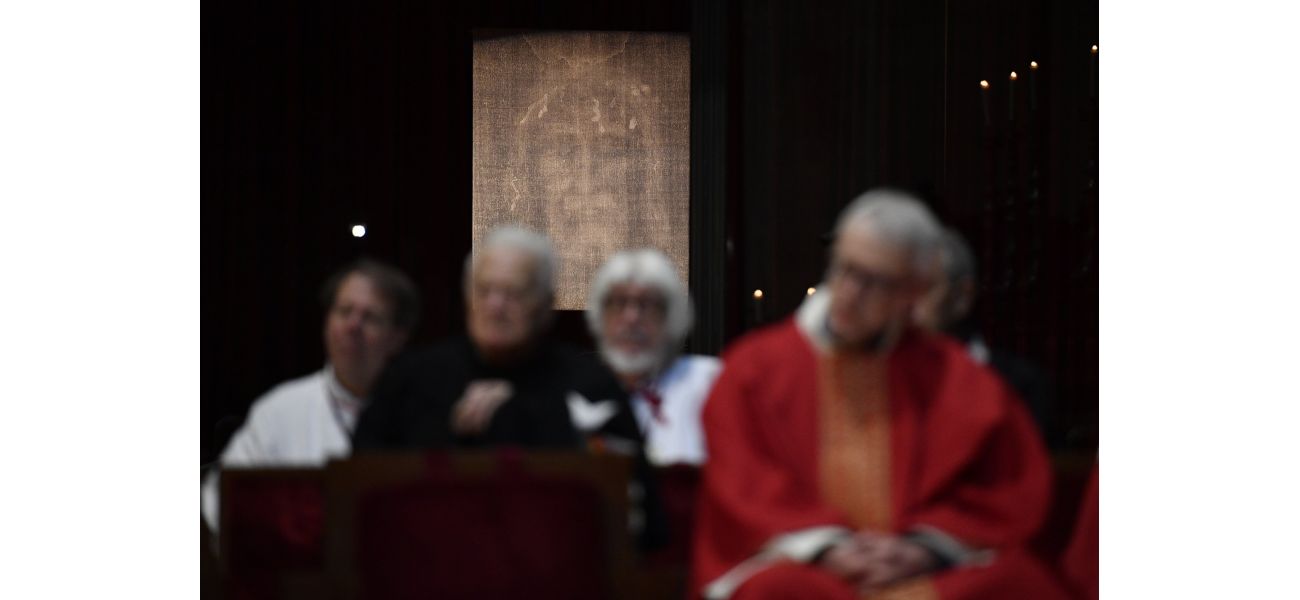Surprising new information uncovered about the Shroud of Turin enigma.
Research shows Shroud of Turin not touched by Jesus, according to Brazilian expert.
October 30th 2024.

The Shroud of Turin, a religious artefact kept in Italy, has long been a source of fascination and debate among believers and non-believers alike. Its significance lies in the belief that it was once wrapped around the body of Jesus Christ after his crucifixion. However, a new study has emerged, claiming that the shroud may not have actually touched the body of Jesus.
This new study, conducted by Brazilian graphics expert Cicero Moraes, suggests that the faint markings on the shroud could not have been left by a human body. Instead, Moraes believes that the shroud was created using a technique called bas-relief, which involves shallow carvings. To support his theory, Moraes built a virtual simulation of the shroud using virtual fabric and a body similar to that of Christ. The resulting image was significantly different from the actual shroud, leading Moraes to conclude that the shroud is not an actual representation of Jesus.
Moraes compared his findings to the mask of Agamemnon, a death mask said to be cast from the face of an ancient Mycenaean king. He noted that the mask also showed distortion, similar to what he found in his virtual simulation of the shroud. In fact, Moraes believes that anyone can replicate this effect at home by simply using pigmented liquid and wrapping it around their face, producing a similar distorted image.
Some may argue that the shroud is a forgery, while others believe it to be an authentic representation of Jesus. However, Moraes proposes a different perspective – that the shroud is actually a work of art, carefully crafted to convey a religious message. He believes that the shroud serves its purpose as a non-verbal iconographic work, successfully delivering its intended message.
This is not the first time that the shroud has been studied. In the 1970s, the Shroud of Turin Research Project conducted several investigations, with different conclusions drawn by each researcher. Some, like microscopist Walter McCrone, believed that the shroud was painted with pigments and did not contain any traces of blood. However, not all of his colleagues agreed with this conclusion. Even the Vatican has wavered in its stance on the shroud, with some popes admitting that it is a representation of the shroud rather than the actual object touched by Jesus.
In the end, the debate over the authenticity of the Shroud of Turin continues to divide opinions. While some may believe it to be a holy relic, others see it as a work of art or even a forgery. One thing is certain – the mystery and fascination surrounding the shroud will continue to captivate people for years to come.
This new study, conducted by Brazilian graphics expert Cicero Moraes, suggests that the faint markings on the shroud could not have been left by a human body. Instead, Moraes believes that the shroud was created using a technique called bas-relief, which involves shallow carvings. To support his theory, Moraes built a virtual simulation of the shroud using virtual fabric and a body similar to that of Christ. The resulting image was significantly different from the actual shroud, leading Moraes to conclude that the shroud is not an actual representation of Jesus.
Moraes compared his findings to the mask of Agamemnon, a death mask said to be cast from the face of an ancient Mycenaean king. He noted that the mask also showed distortion, similar to what he found in his virtual simulation of the shroud. In fact, Moraes believes that anyone can replicate this effect at home by simply using pigmented liquid and wrapping it around their face, producing a similar distorted image.
Some may argue that the shroud is a forgery, while others believe it to be an authentic representation of Jesus. However, Moraes proposes a different perspective – that the shroud is actually a work of art, carefully crafted to convey a religious message. He believes that the shroud serves its purpose as a non-verbal iconographic work, successfully delivering its intended message.
This is not the first time that the shroud has been studied. In the 1970s, the Shroud of Turin Research Project conducted several investigations, with different conclusions drawn by each researcher. Some, like microscopist Walter McCrone, believed that the shroud was painted with pigments and did not contain any traces of blood. However, not all of his colleagues agreed with this conclusion. Even the Vatican has wavered in its stance on the shroud, with some popes admitting that it is a representation of the shroud rather than the actual object touched by Jesus.
In the end, the debate over the authenticity of the Shroud of Turin continues to divide opinions. While some may believe it to be a holy relic, others see it as a work of art or even a forgery. One thing is certain – the mystery and fascination surrounding the shroud will continue to captivate people for years to come.
[This article has been trending online recently and has been generated with AI. Your feed is customized.]
[Generative AI is experimental.]
0
0
Submit Comment





